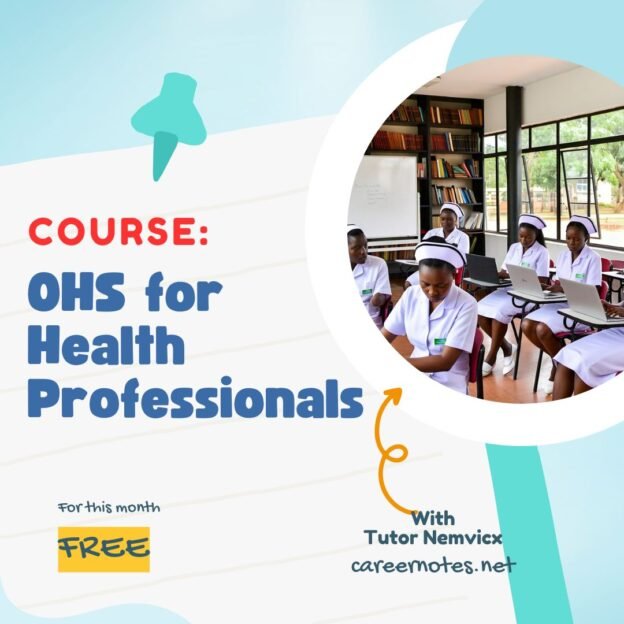Occupational Health and Safety- OHS

About Course
Course: Occupational Health and Safety – OHS
This course equips health students—including nurses, midwives, public health professionals, and other allied healthcare workers—with essential knowledge and practical skills in occupational health and safety (OHS), tailored specifically to healthcare and other high-risk environments. It has been developed by professional tutors in alignment with national curricula for nurses, midwives, and allied health professionals.
This course is designed to prepare you as a confident leader in workplace health and safety while supporting success in academic and professional examinations.
Through a comprehensive and contextually relevant curriculum, learners will explore foundational and advanced OHS topics, including hazard identification, risk assessment, waste management, legal frameworks, and preventive strategies based on globally recognized models such as the five-step hazard control hierarchy.
You will gain critical insights into the health worker’s role in promoting workplace safety, proper use of personal protective equipment (PPE), injection safety, post- and pre-exposure prophylaxis protocols, and the Workers’ Compensation Act 2000.
The course also addresses psychosocial challenges such as work-related stress, violence, and the importance of work-life balance, preparing you for the realities of modern healthcare environments.
Engaging tools such as interactive quizzes, case studies, past paper reviews, and assignments ensure practical application of knowledge for both workplace readiness and exam success.
By the end of this course, students will be able to:
-
Understand key occupational health and safety concepts, principles, and legal frameworks relevant to Uganda.
-
Identify, categorize, and assess occupational hazards across various healthcare and non-healthcare workplace settings.
-
Apply appropriate prevention and control measures, including the five-step hazard control hierarchy and proper use of PPE.
-
Promote and maintain a safe working environment by educating others, practicing safe procedures, and responding effectively to incidents and psychosocial risks.
-
Integrate ethical and sustainable approaches into occupational health and safety practices.
Course Content
🔷 Topic 1: Course Introduction and Orientation
-
Lesson 1.1: Welcome and course overview
-
Lesson 1.2: What is Occupational Health and Safety?
-
Lesson 1.3: Students’ roles and responsibilities
-
Quiz: Introduction to OHS
✅ Topic 2: Foundations of Occupational Health and Safety
🔷 Topic 3: Occupational Hazards in the Workplace
🔷 Topic 4: Hazard Prevention and Control
🔷 Topic 5: OHS Legal Frameworks and Ethics
✅ Topic 6:Healthcare Waste and Infection Control
🔷 Topic 7: Health Protection and Disease Prevention
✅ Topic 8: Mental Health and Psychosocial Risks at Work
✅ Topic 9: Risk Management and Safety Culture
✅ Topic 10: Modern Issues in Occupational Health and Career Opportunities
Student Ratings & Reviews

